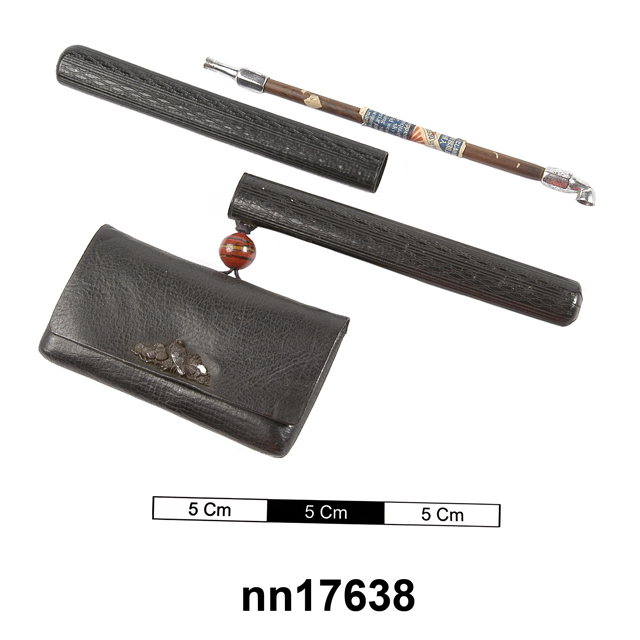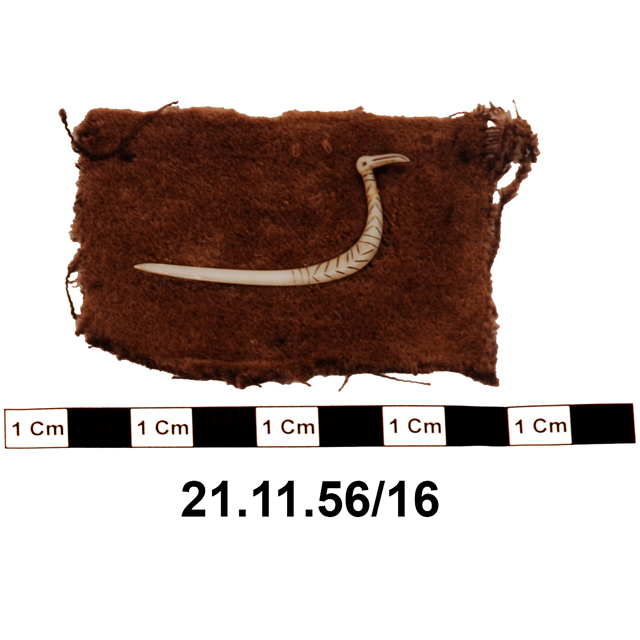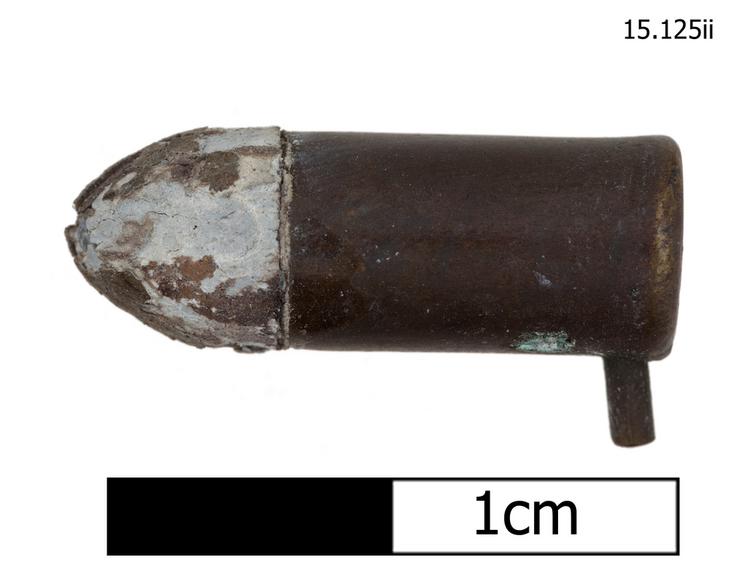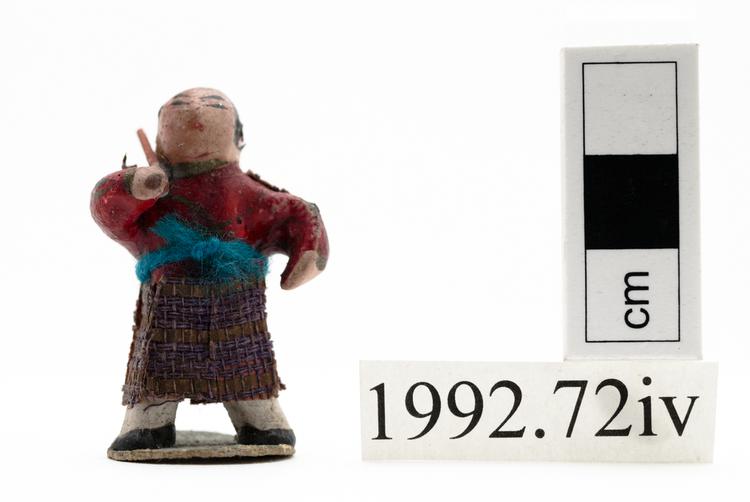
Carved wooden Gelede helmet mask with a man and a pig on the top of the head. Painted ochre, black and red with black hair.
he can be seen through the transparent cloth worn over the face, and he can unmask in public. The name of the dancer may be given in the song that accompanies his act, making him the subject of praise or criticism, depending on his performance. The master drummer plays ‘Eka’, short bursts of rhythm which the dance must match exactly. The ankle rattles he wears must make the same rhythms and he must end on the final drum syllable by lifting his right foot in the air. If the masks are male and female their movements differ. The male mask dances with fast foot stamping and twirling, whilst the female makes graceful arcs and flowing curves. Twin dancers, in identical masks and costumes, refer to the extent of women's control over life, which allows them to bring two identical beings into the world. Dancing Gelede is a great honour as it is thought to improve the well being of society. The dancer is selected by the elders to dance on behalf of the whole community. The Gelede dance master is called Koni, (ko ni, literally “to teach, to instruct�). The Koni decides what steps will be learned and what rhythms the drums must play. When the dance is well rehearsed an elderly male official from the Gelede cult comes to watch it and give feedback as to whether it is ready and worthy of ‘the mothers’. In a Gelede performance the dancers perform in order of their seniority and it usually takes place in the market place or other meeting place where the community come together. As they dance the dancers make their way across the space towards the drummers at the opposite end.t
Gelede masks, such as this one, are worn by male Yoruba dancers at festivals honouring the women of the community, living and dead, especially the powerful Great Mothers, including both the elderly women of the community and the ancestors of Yoruba society. The gelede performances entertain and educate, and document elements of everyday life. Through their movements, gelede dancers express Yoruba ideals of male and female behaviour.






